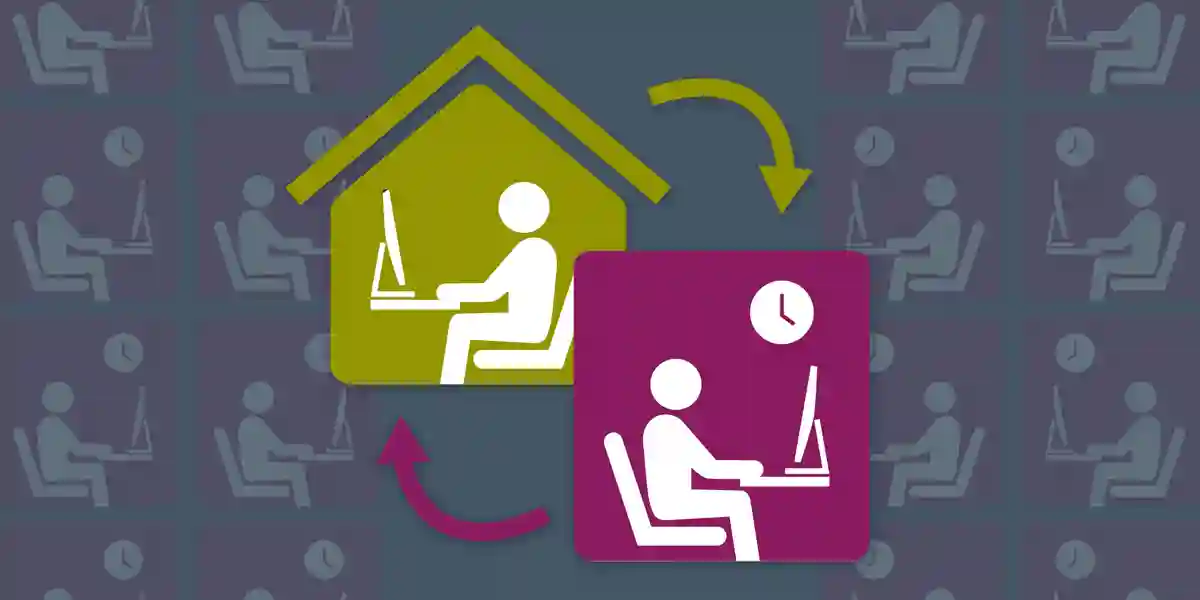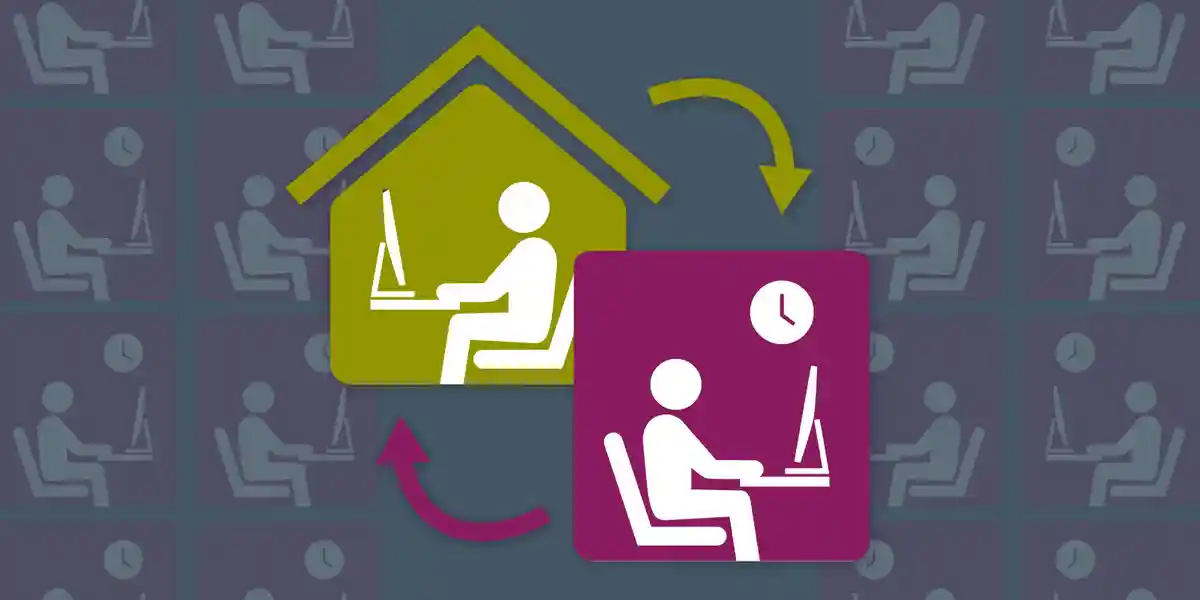Advances in technology, globalization of manufacturing, and the impact of social media are just three of the many influences that have created changes in the workplace today. Throw in a global pandemic and nearly everyone now thinks and feels differently about many aspects of their life than they did just a couple of years ago.
When changes are gradual, we can keep up and continually adapt. But the sudden government restrictions, travel bans, isolation rules, and more have created whiplash and an immediate need for the workplace to change in order to survive.
So, what’s a leader to do? In this blog, I’ll discuss how leaders can best work with their teams during times of change as well as strategies for how to do this while working hybrid or remote. But first, let’s define and dig into the framework that describes what’s driving changes in the workplace today.
The Challenge of Leading Through Change
After the fall of the Soviet Union, the U.S. government introduced a framework called VUCA: Volatile, Uncertain, Complex, and Ambiguous. VUCA was used to describe the global environment and help leaders develop strategies to identify and mitigate risks. Let’s consider each component:
- Volatile: The rate of change is increasing in an unpredictable or unrepeatable pattern. Think about how quickly governments changed the social interaction rules as COVID case rates rose and fell.
- Uncertain: The past does not predict the future. At the start of 2020, unemployment skyrocketed in many industries in a matter of months.
- Complex: Many causes and mitigating factors are difficult to understand. During COVID, global interconnected just-in-time supply chains couldn’t keep up with demand for basic goods like toilet paper and supermarket items for the first time in three generations.
- Ambiguous: Lack of clarity about the meaning of an event. We are so inundated with data that identifying what is relevant and what is not can be time consuming and counterproductive.
A Framework to Help Leaders Through Change
We can probably agree that VUCA is a fitting description for the world we’ve lived in since 2020. The VUCA environment has taken its toll on companies, with many of them forced to pivot or close their doors. It has also taken its toll on the employees. Job security, work expectations, and social interactions have all changed. Much of the workforce has been on an emotional roller-coaster.
The antidote to VUCA is for leaders to consider how they can contribute by offering Vision, Understanding, Clarity, and Agility:
Vision
Leaders must have a clear and well-communicated picture of the team’s and organization’s future and share that vision with employees. Clear measurements of progress and outcomes must accompany this so teams know how they’re tracking. Most organizations have a bias toward outcome measures (the end goal), but rarely have solid predictive lead measures that guide behaviors. The pressure to continually generate “quick wins” means organizations get stuck in a trap of short-term goal setting that neglects the bigger picture.
Understanding
Along with creating a vision, leaders need to create an environment where their teams are able to build strong relationships and social networks. After two years of taking a transactional approach to work, and interactions, it’s now important to take the time to build commitment and consensus. Invest in the collection and interpretation of information to develop new perspectives. Team members will feel heard and valued when leaders proactively take the time to seek out and listen to alternative viewpoints.
Clarity
Despite greater complexity, effective leaders are looking to simplify processes and procedures where possible by removing internal bureaucracy and delegating as much authority as possible to the front line. With a clear understanding of the capacity of their team to take on additional work, they have the courage to say “no” or “not now” to urgent but less important new work. Burnout has been a real symptom of a lack of priorities and a poor understanding of how workers are coping.
Staying focused could be as simple as writing the team’s top three goals on a whiteboard and asking which goal the new request supports. If it supports none of them, then it isn’t considered. Additionally, teams need extra space to experiment with ideas and share them with others, or to proactively address derailing patterns of behavior and coach quickly to rapidly develop new habits.
Agility
The world keeps evolving, so leaders must still welcome new ideas and keep up with the latest trends. We see effective leaders promoting a culture of continuous improvement by revisiting processes periodically and challenging “best practices.” Invite risk taking within your team by delegating challenging work with clear outcomes and planned coaching. Create a culture of learning by reframing failure so it is seen as normal and not negative to eliminate fear and make it easier to innovate.
While leading through change requires different strategies and leadership skills than in more stable times, what requires even more thought is leading through changing times while also leading a hybrid or remote team.
How Remote Work Changed Our Workforce
Remember the “good old days” of in-office work? Ten minutes before a morning meeting, you’d run into a colleague in the kitchen while grabbing a coffee and chat about the weekend or work. You’d get to the meeting room a few minutes early to get set up and talk with other colleagues or introduce yourself to someone new to the team or joining from another department. Connections like these, sometimes across functions, happened organically and naturally.
For two years during the pandemic, office employees worked almost exclusively from home. At first, it was a novelty. We tried to replicate in-person office culture with initiatives like virtual happy hours to boost morale. But eventually it became clear that virtual happy hours couldn’t replace the organic interactions we missed—and the important connections and conversations they activated.
So, we leaned into the efficiency that the virtual workplace could offer. And there was a shift in the way we worked. Our calendars booked up with back-to-back meetings. We completed and caught up on independent work only at the very end of the day. We clicked from one meeting to the next with no transition. No time to prepare. No time to shift our thoughts. No time to eat or use the bathroom. We were expected to deliver 100% efficiency for 8+ hours. Day after day after day.
Work became a transactional experience. Company cultures have been diluted. Limited to interactions that were exclusively work related, remote work interrupted our connections with colleagues, teams, and leaders. Many employees still experience work that way today.
Leaders have the opportunity to play an important role to improve and facilitate meaningful hybrid and remote work experiences. Here are two strategies they can use.
Strategy #1: Collaboration Days
There are nuances for each organization, but leaders must consider how the decision to come back into the office will be received by workers. How do you tell workers that after successfully working remotely for two years, they now have to spend 40 minutes driving to and from work, paying for parking, and fuel, to sit behind a computer screen all day at the office? It doesn’t make sense.
Rather than making an arbitrary decision around work attendance, design your in-office requirements as days for high levels of collaboration. Don’t refer to in-person time as “office days.” Instead, structure the work week around “collaboration days.”
For example, one of our clients has decided that Wednesday is the “company day” where all employees work from the office. Tuesdays and Thursdays are recommended “collaboration days” where intact teams and their related cross-functional teams are in the office together. Face-to-face meetings are scheduled on collaboration days, especially cross-functional meetings. These cross-functional interactions build alignment, clarify the interdependence of worker roles, and create visibility into areas of the business that are vital for alignment and innovation.
These days also create time for socializing and building work friendships. Socializing is important and lack of social time with work colleagues is one of the reasons that people have felt disconnected. Most people need to feel like they have friends at work, and we build trust more rapidly through in-person interactions.
Strategy #2: Magic Time
Another tool that can help bring people together is a concept called "magic time." This is a protected block of time on everyone's calendar (for example, two afternoons per week) that can be used as needed to address emerging issues or topics not covered in other meetings. No recurring meetings are scheduled during this time, keeping everyone’s calendar open. Magic time enables stakeholders to attend meetings on short notice or for teams to get together and brainstorm or solve urgent problems.
Embracing the New Relationship With Work
Over the past 30 years, we have seen a big shift in the relationship between employees and their work. For many knowledge workers, work is no longer just a means to an end. And it’s not about finding a company to work at for 20 years.
University graduates start their work careers with high expectations of self-fulfillment and ultimately self-actualization. Employee engagement isn’t a buzzword—it’s a requirement of the workplace. Enjoyment of our work, genuine relationships with colleagues and leaders, and opportunities to learn and grow are now the basic requirements for employers.
Organizations cannot expect automatic loyalty from their workers anymore either. Loyalty must be earned by treating employees well and by leaders doing the heavy lifting.
Leaders can build trust by sharing authentically and offering a clear business rationale. They can build collaborative teams by asking for help and encouraging team members to solicit diverse perspectives. Leaders must also look for the voices that haven’t been heard and amplify them. High-potential employees will stay with a company if they have a clear career path, measurable performance goals, and a manager who provides on-the-job learning opportunities, effective feedback, and coaching. Employees want to feel that their managers care about them.
The effective leader of the future will be comfortable asking questions they don’t know the answers to. They will consider perspectives they haven’t thought about before, and they will become even more focused on what is most important to the overall success of the organization.
If there’s one thing that a global pandemic has done, it’s brought forward the workplace of the future. It is here now.
Learn how to build a strong culture in a hybrid workplace.
Matthew Page-Hanify is a senior consultant with DDI. He’s also a husband, father of three teenagers, and an occasional artist.
Topics covered in this blog

